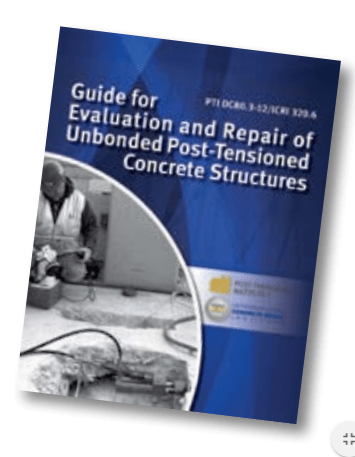I will preface the following by saying that PT repairs are a tough gig - very hard work, dangerous work for the unskilled, often variable work scope, clients who can be very demanding (what else is new?), and requires a crew with patience and with abilities to think outside the box.
...and workers compensation insurance rates for contractors involved with PT repair scope can be significantly higher in some markets.
In my market (and most typical in the US - and certainly in So-Califonia after speaking with colleagues) the traditional PT crews who install PT to suspended slabs to new buildings typically are not so good at PT repairs, IMO. They are ironworkers who know little about concrete, and even less about deteriorated and damaged concrete and associated repairs. When such crews are engaged on a PT repair project they require another sub (concrete/mason sub) to do the chipping/cutting (and some of those subs have little understanding of concrete chipping with PT tendons), then the PT crew returns and does the tendon work, then the concrete sub returns to patch etc. Very inefficient, and I have seen several personnel accidents happen with this model.
Preferable for the concrete repair contractor to have in-house EXPERIENCED PT repair capabilities.
What I did several years ago was set up a selection of standard in-house details of tendon repair types (like Type A, Type B repairs etc) that we can pass to the field so at each tendon, at each end, or intermediate location, we know whether it will be a splice repair, a center-stressing ("dogbone") repair), double-end stressed, abandoned, relocated anchorage etc etc - basically covering most of the possible options, so that things can be mixed-and-matched to suite the site details, access availability, and degree of damage/distress. Even with most of the variables covered/detailed there is always a wild card that requires special consideration.
De-stressing can take many forms: down-and-dirty angle grinder to sever strands where access permits, to more complicated situations where you have to chip out the anchorage (on the slab edge side) and let is 'self-demolish' - takes some getting used to!
Strand removal and replacement can often be challenging. Paper-wrapped systems can be especially frustrating, and time-consuming.
Sheath repairs can be a real pain - clients expect that PT repairs will last forever - and to that end, many many PT repairs do not go far enough to ensure that the best possible durability is built into the tendon repair - especially at breaches in the sheath, and protection to splicing hardware.
Multi-monostrand tendon bands repairs can be troublesome - especially if one or two 'internal' tendons to a group of say five has been damaged - how to best accommodate splicing hardware, and not screw up adjacent un-damaged tendons, nor interfere with other repaired tendon hardware.
Technical resources are a bit lacking on this subject. The PTI Guide to Evaluation is an ok reference, but more for the front-end of the proposed repairs, where the EoR will use to try and establish the severity of damage to the tendons, and the probable scope of repairs. What I did about 25 years ago was search ACI's
Concrete International and ICRI's
Concrete Repair Bulletin and photocopy (before digital PDF files) case studies articles on PT repair projects, then read/collected/stored them, and continue to regularly update my 'portfolio' of PT repair case studies. You can learn a bunch from those case studies. I also attended the ICRI conventions and listened to presentations on the subject. But the regular attendance at conventions can be a huge time commitment...and invariable it is just a marketing presentation by the speaker, and not the technical content I expected.
With regards to training, 99% of it comes from field experience - takes time to get it, but nothing beats it. I came from the design office, designing several million SF of PT, then, after working for a large PT contractor, transitioned into PT repairs - so, IMO, it helps having the technical/theoretical why and where-fores, but damn, an experienced practical field guy/crew will run rings around the technical/theory.
For 2019, PTI has a new field certification entitled LEVEL 3 UNBONDED PT REPAIR REHABILITATION & STRENGTHENING - first session begins this June. I am not a particular fan of the PTI Certifications for this scope of work - you can attend the class room sessions and achieve an 80% pass and you are - in theory - good to go - when in reality PT repair scope is very hand-on practical. But here is the link to the course:
Link
As far as equipment, here is a short list of the specialty equipment required (over and above the usual concrete restoration equipment like chipping hammers, grinders, air compressors etc):
1. 8" stroke and long-stroke monostrand rams;
2. hydraulic pumps and gauges;
3. oxy-acetylene brazing equipment;
4. short-stressing gear;
5. de-stressing bridges
6. double-end joiners;
7. reusable splice chucks;
8. HDPE welding machine (optional, but superior for sheath repairs);
9. grease pumps and injectors
10.3/8" strand with associated grippers for rams;
11. strand pushers/pullers;
12. GPR subsurface radar/scanner.
I would recommend that your restoration contractor friend do some research on the availability of PT hardware/equipment suppliers in their market locale. In the US, companies like PRECISION HAYES (now combined with GTI) have a bunch of specialized tools that assist the PT repair contractor, and with their manufacturing expertise they can often fabricate custom equipment to your requirements.
Good luck to you and your friend on the endeavor.


